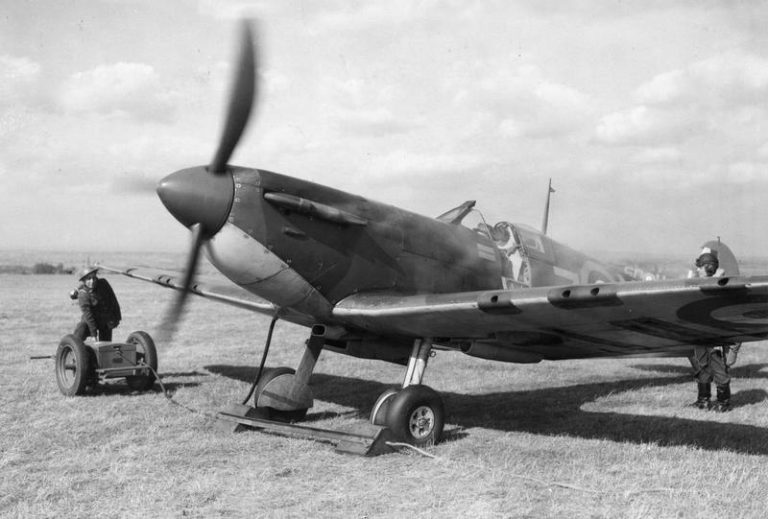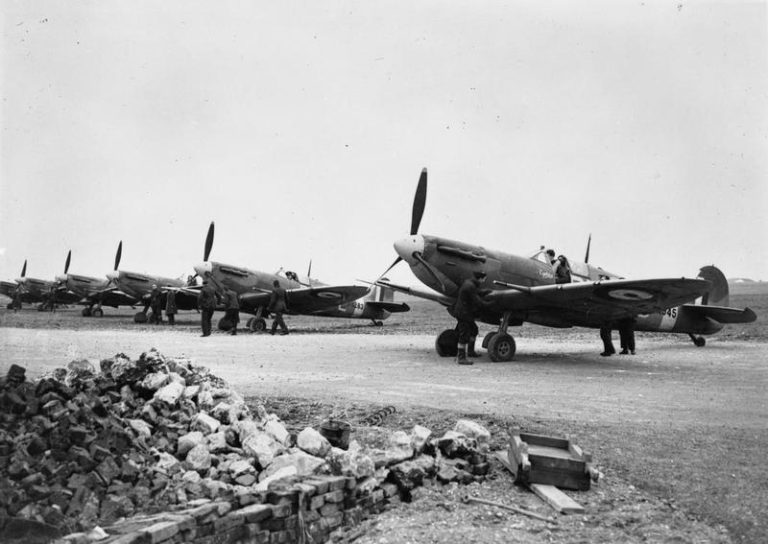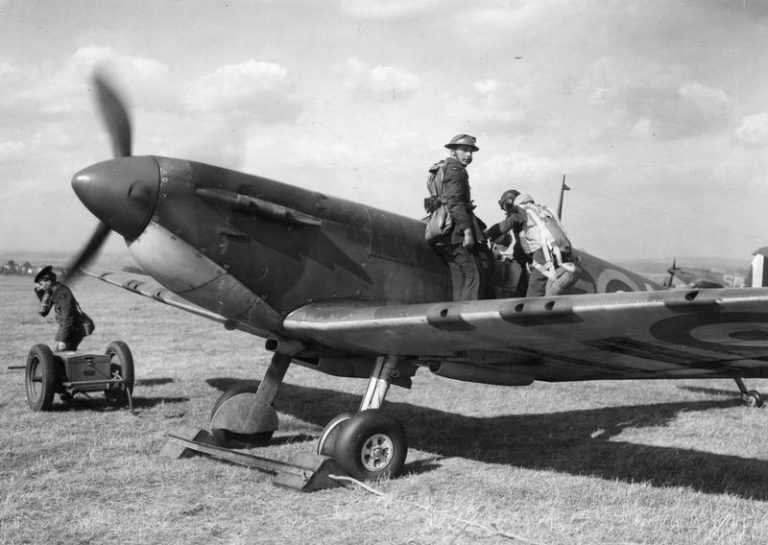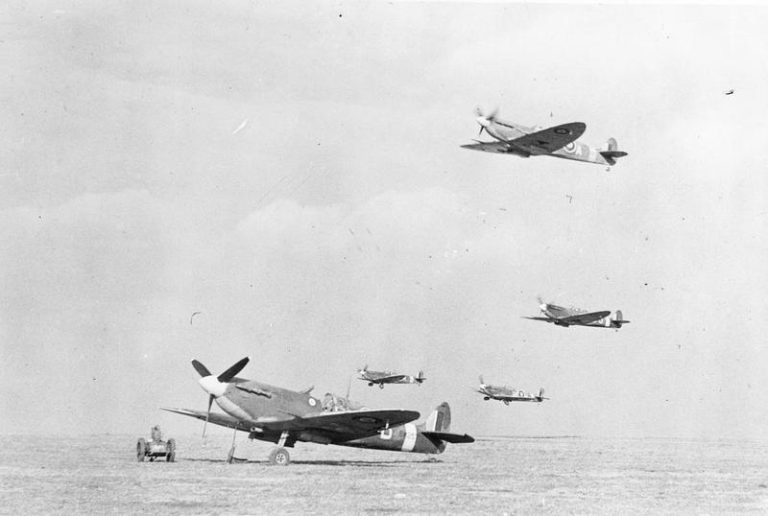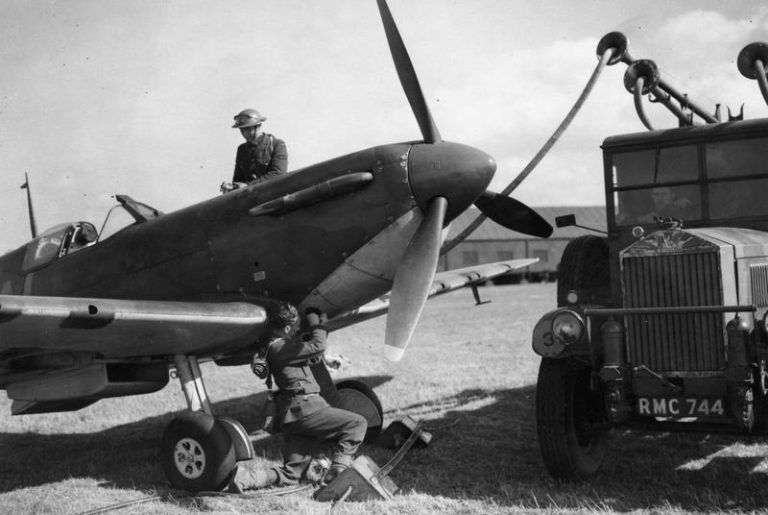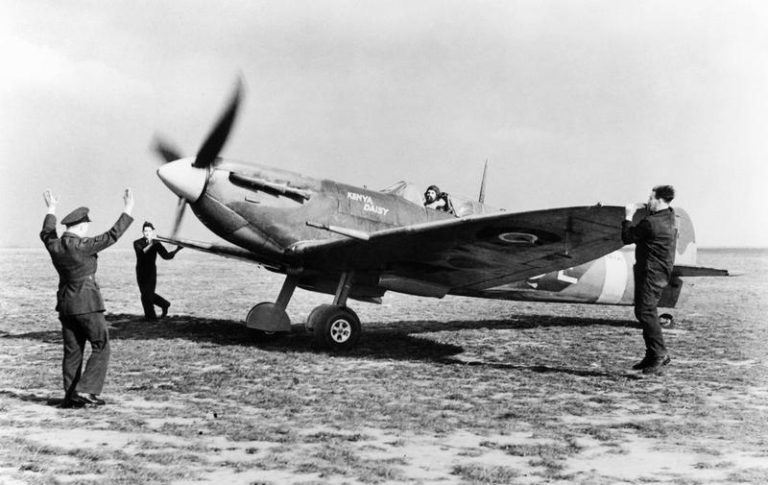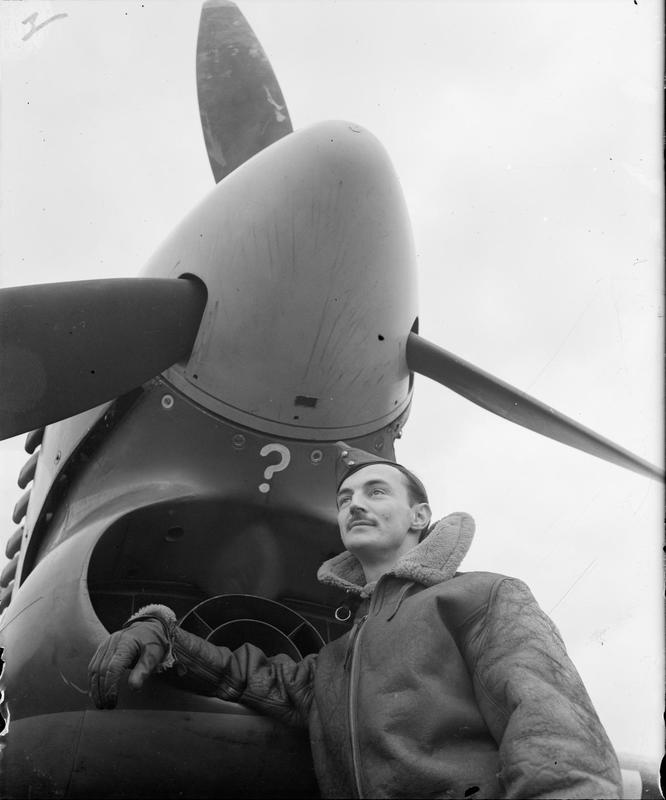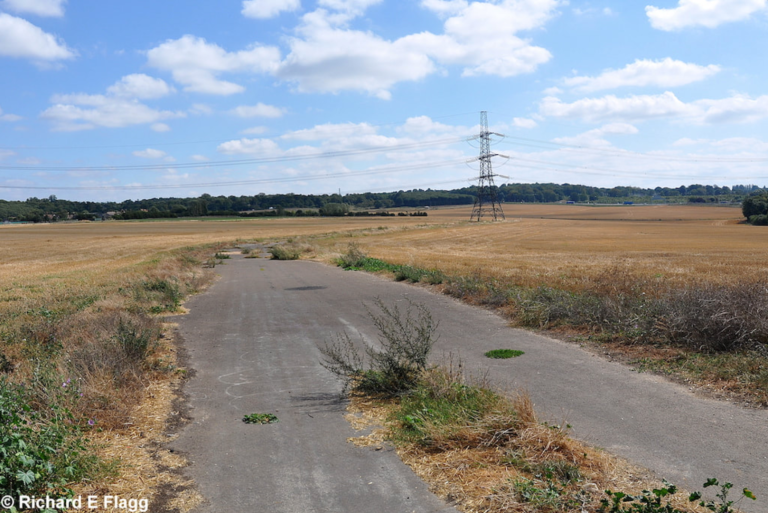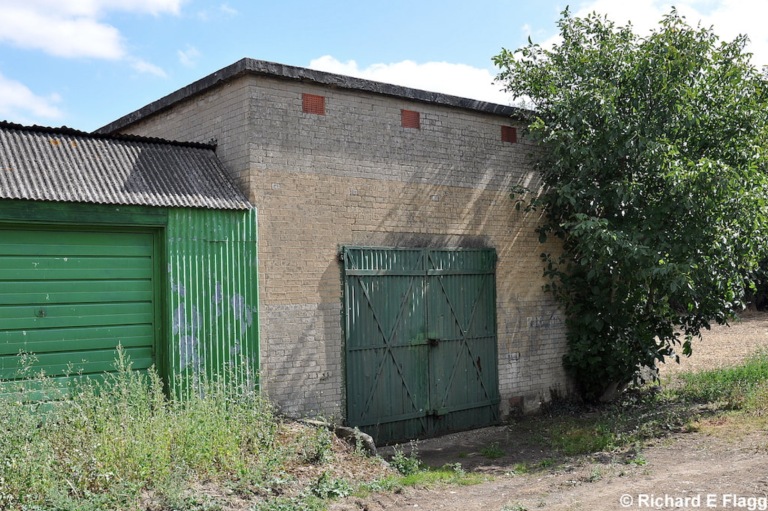Airfield search
Gravesend (Chalk)

| Also known as: | Gravesend Aerodrome / London East Airport / RAF Gravesend / RAF Station, Gravesend / Riverview Park |
| County: | Kent |
| Current Status: | Housing / Leisure activity |
| Date: | 25 August 1932 - June 1956 |
| Current Use: | Disused |
| Used By: | RAF (main user) / RAF (Belgian) / RAF (Polish) / Civil (main user) / RAAF / RCAF / RNZAF |
| Landing Surface Type(s): | Unpaved |
| Aircraft Role(s): | Aircraft manufacture / Air-sea rescue / Bomber / Fighter (main role) / Fighter-reconnaissance / General aviation (main role) / Reconnaissance / Trainer |
Gravesend was first used as a private landing ground by Australian aviator Captain Edgar Percival prior to opening officially as an airport in 1932. However, despite efforts to attract airlines, it was largely unsuccessful in doing so. Airliner activity was limited to a few that landed at Gravesend, diverting due to bad weather at Croydon.
Private civil aviation and the Gravesend School of Flying were the main users of the airfield at this time. Percival Aircraft did operate a factory at the site between the early 1930s and 1936 but moved to larger premises at Luton.
The military first moved in in 1937 with the formation of No 20 Elementary and Reserve Flying Training School. This element trained both RAF and FAA pilots, using aircraft such as de Havilland Tiger Moths, Hawker Hinds and Fairey Battles.
The school left as the war started and Gravesend became a satellite for Biggin Hill. The airfield’s first resident fighter unit, No 32 Squadron, arrived with Hawker Hurricanes in January 1940. The airfield played an important role in the Battle of Britain, although managed to avoid significant damage from attack by the Luftwaffe. A large number of fighter squadrons operated from Gravesend during the war, usually for relatively short periods of time. Nos 19, 65 and 122 Squadrons all arrived during October/November 1943 with Supermarine Spitfires, soon converted to North American Mustangs and left for Ford the following April. Departing at the same time was air-sea rescue unit No 277 Squadron which had proved another prominent resident since December 1942.
The period surrounding D-Day was an especially busy time for Gravesend. Hawker Typhoons, de Havilland Mosquitoes and Spitfires were among the aircraft flying from the airfield, supporting the invasion.
All aircraft, the last being a Mosquito Wing, left after the invasion as the German V1 flying bomb campaign increased and Gravesend became one of several airfields particularly at risk from these attacks. It therefore had to close on 30 July 1944. The airfield became a control centre for aircraft negotiating the large number of barrage balloons in the area. Gravesend had two grass runways, both of which were extended during the war. Sommerfeld Track was also laid in 1942.
Following the war, Gravesend was put under Care and Maintenance as a military airfield, but there was still flying carried out by long-term resident Essex Aero Limited. This company specialised in manufacturing self-sealing petrol tanks for aircraft. However, it went into liquidation early in 1956 and the airfield closed shortly after once its pre-war owner, Airports Limited (also owner of Gatwick), decided to sell the site. Houses were built on the site from 1958 as well as two schools, a sports centre and a golf course latterly. There are now very few tangible remains of the airfield.
The following organisations are either based at, use and/or have at least potentially significant connections with the airfield (as at 01/07/2013):
- Cascades Leisure Centre
- Corsair Model Flying Club
- Gravesend Cemetery
- Gravesend Library
- Southern Valley Golf Club
- Thamesview School
- The Gravesend Historical Society
Main unit(s) present:
-
No 2 Sqn
-
No 3 MU
-
No 4 Sqn
-
No 18 APC
-
No 19 Sqn
-
No 20 E&RFTS
-
No 21 Sqn
- No 23 Balloon Centre
-
No 32 Sqn
-
No 56 Sqn
-
No 64 Sqn
-
No 65 Sqn
-
No 66 Sqn
-
No 71 Sqn
-
No 72 Sqn
-
No 74 Sqn
-
No 85 Sqn
-
No 92 Sqn
-
No 111 ‘P’ Balloon Flight
-
No 111 Sqn
-
No 112 ‘P’ Balloon Flight
-
No 122 Airfield
-
No 122 (Rocket Projectile) Wing
-
No 122 Sqn
-
No 124 Sqn
-
No 125 Airfield
- No 130 Airfield
-
No 132 Sqn
-
No 133 Sqn
-
No 140 Airfield
-
No 140 (Bomber) Wing
-
No 141 EGS
-
No 141 GS
-
No 141 Sqn
-
No 149 EGS
-
No 165 Sqn
-
No 174 Sqn
-
No 181 Sqn
-
No 193 Sqn
-
No 212 MU
-
No 232 Sqn
-
No 245 Sqn
-
No 247 Sqn
-
No 257 Sqn
-
No 264 Sqn
-
No 266 Sqn
-
No 277 Sqn
-
No 284 Sqn
-
No 306 Sqn
-
No 350 Sqn
-
No 401 Sqn
-
No 421 (Reconnaissance) Flight
-
No 464 Sqn
-
No 487 Sqn
-
No 501 Sqn
-
No 604 Sqn
-
No 609 Sqn
-
No 610 Sqn
-
No 949 (Balloon) Sqn
-
No 966 (Balloon) Sqn
-
No 997 (Balloon) Sqn
-
No 1493 (Fighter) Gunnery Flight
- No 2707 Sqn RAF Regiment
- No 2728 Sqn RAF Regiment
- No 2740 Sqn RAF Regiment
- No 2791 Sqn RAF Regiment
- No 2819 Sqn RAF Regiment
- No 2952 Sqn RAF Regiment
- No 3205 Servicing Commando
- No 3207 Servicing Commando
- No 4065 Anti-Aircraft Flight RAF Regiment
- Station Flight, Gravesend
Photographs and video from the unveiling of the ABCT memorial marker on 25 June 2016:
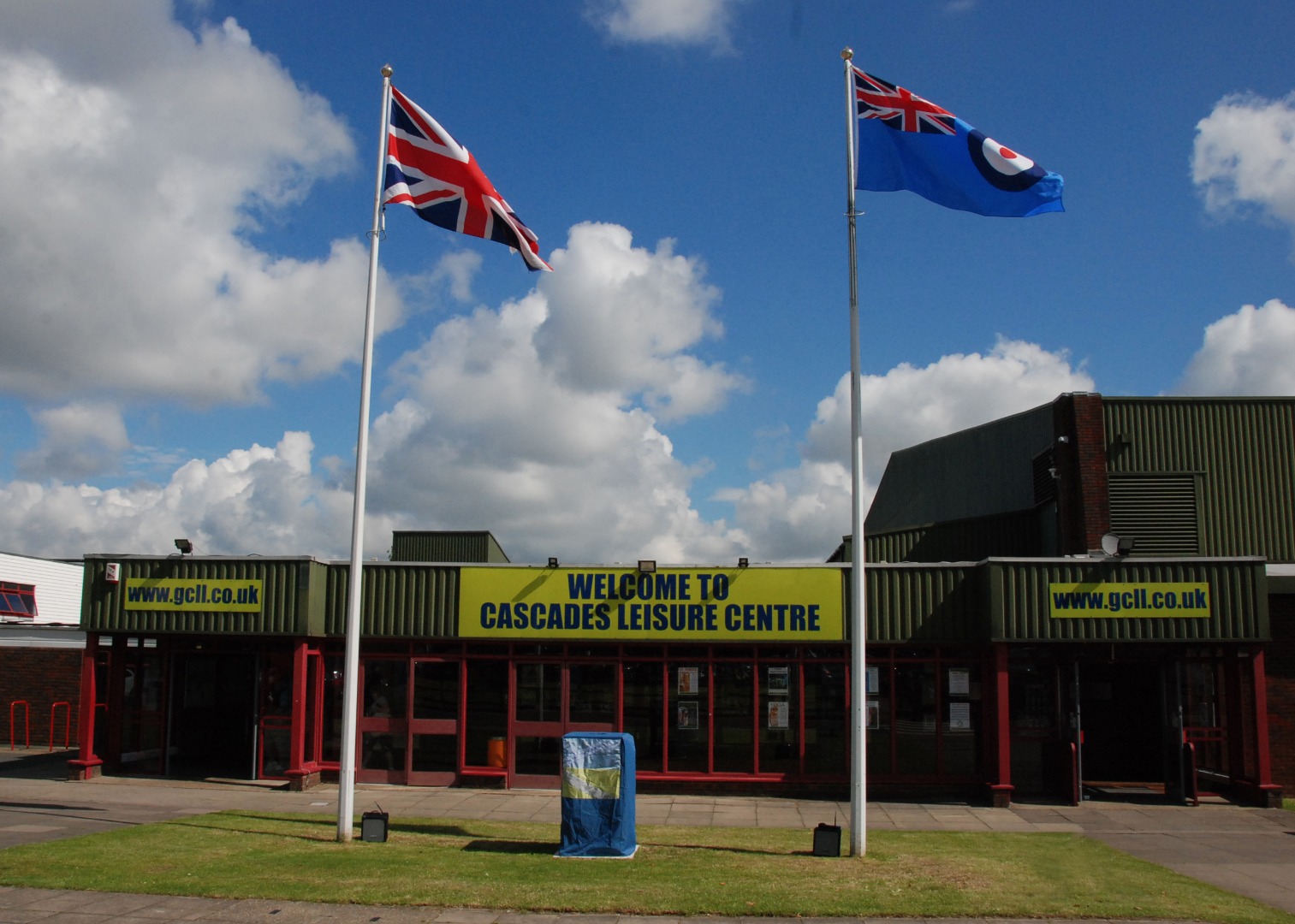
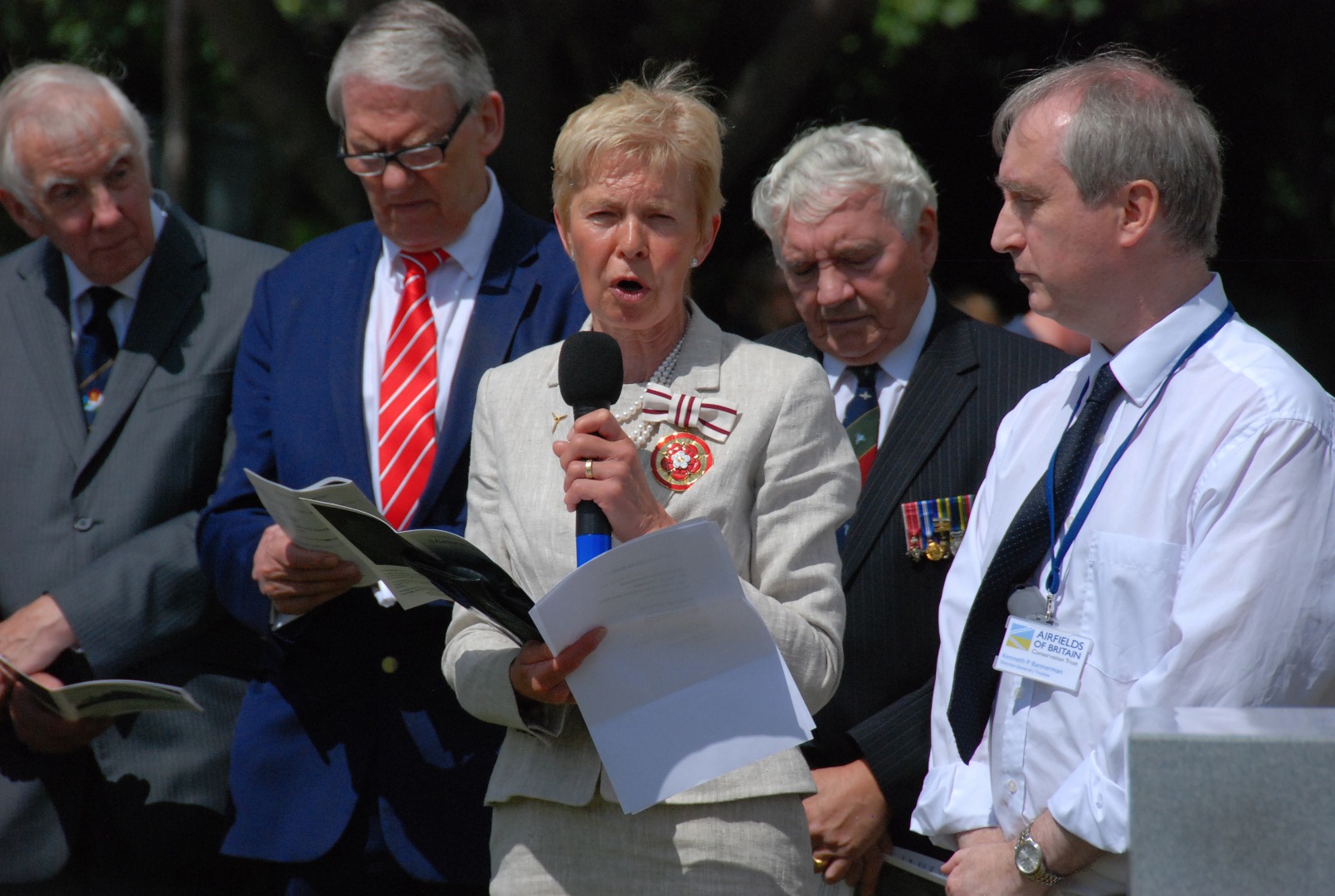
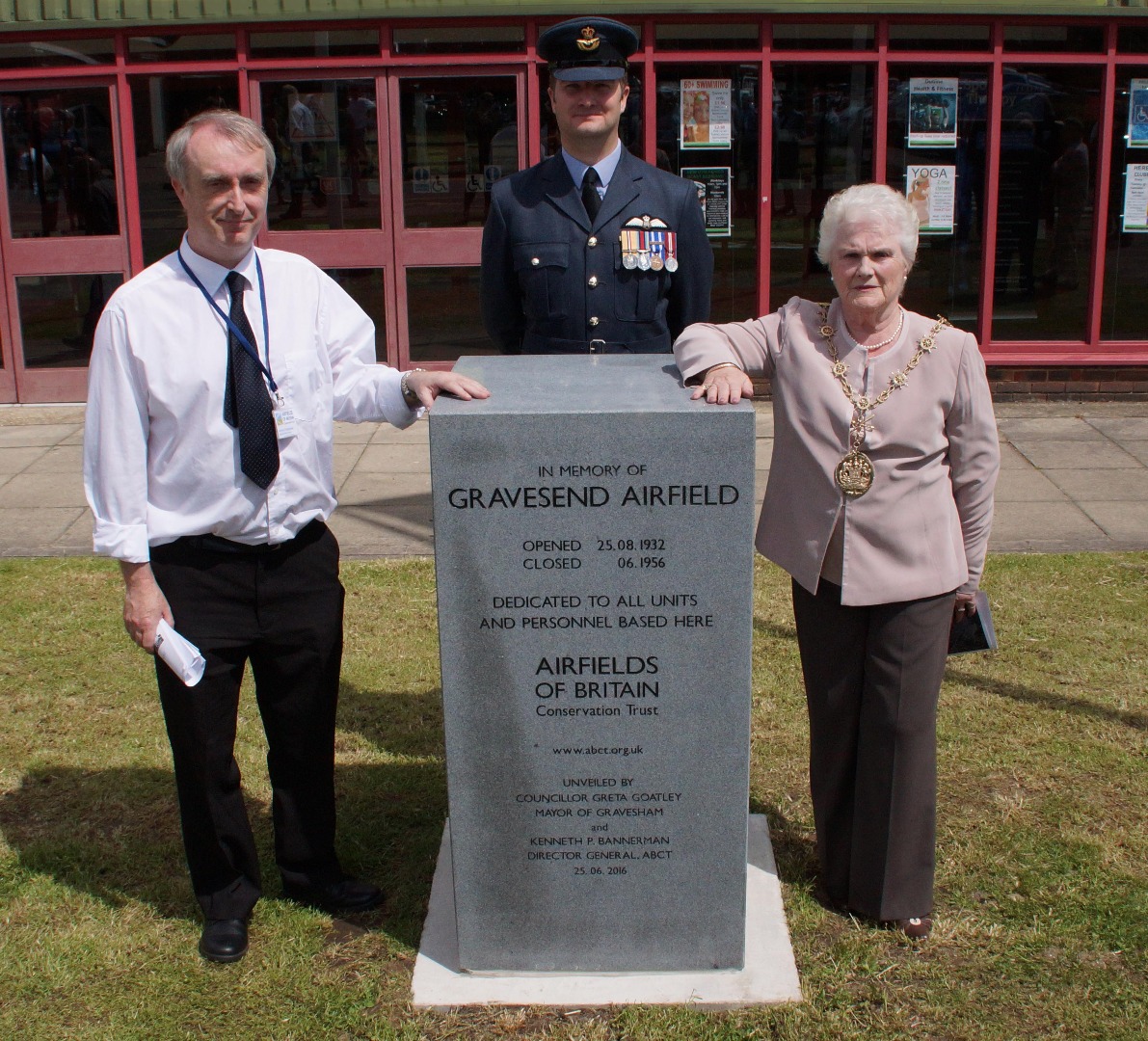
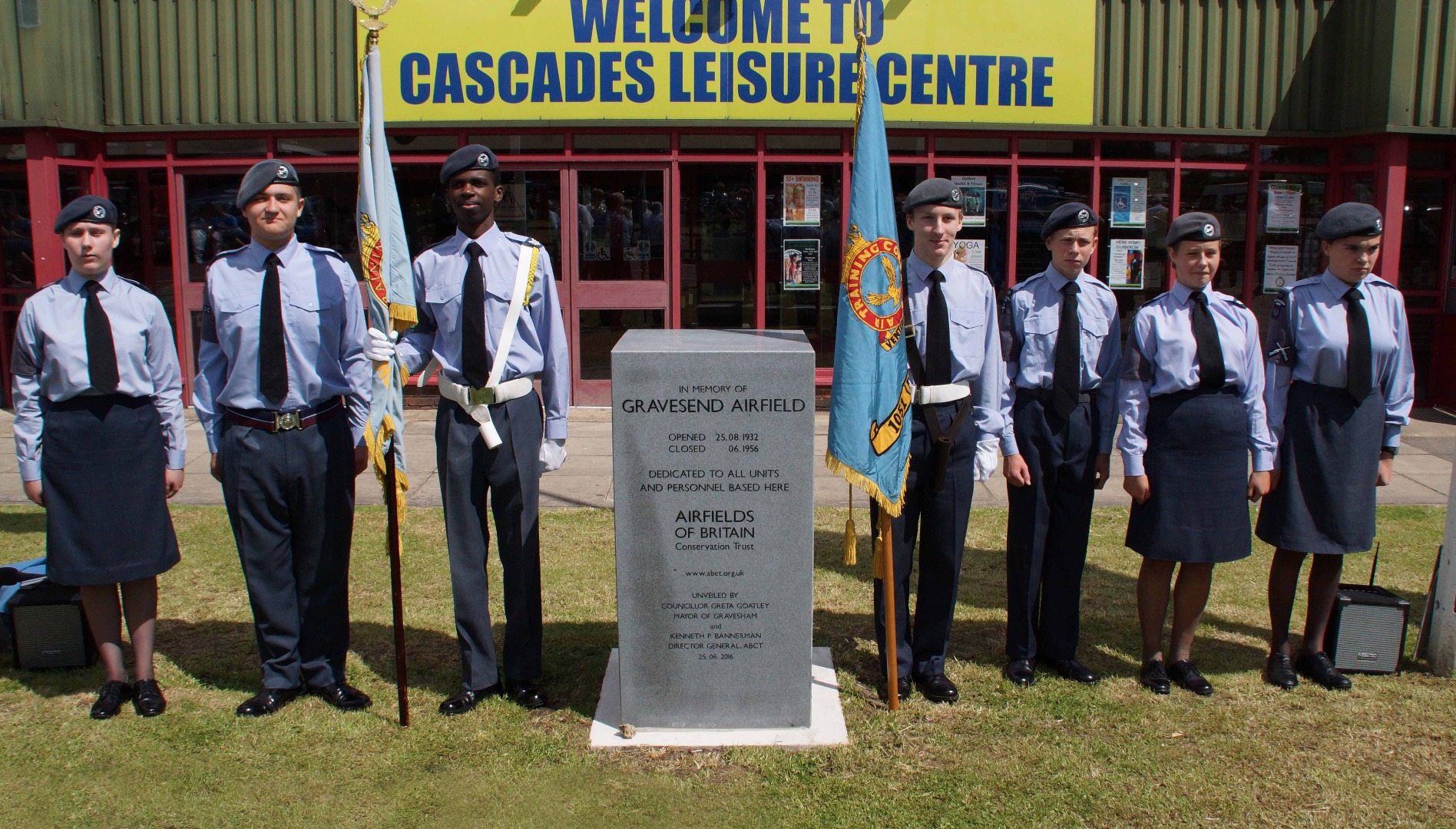
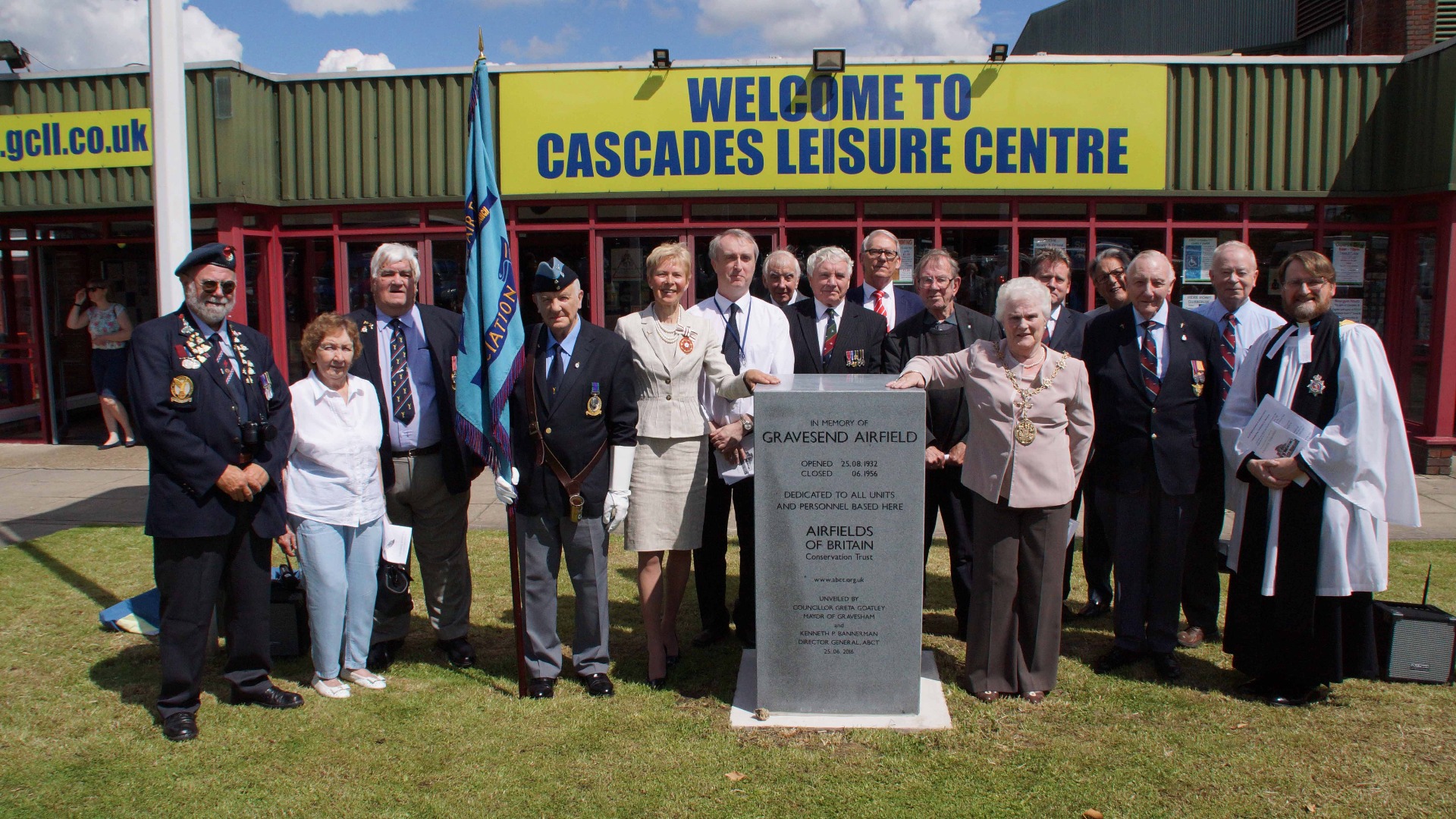
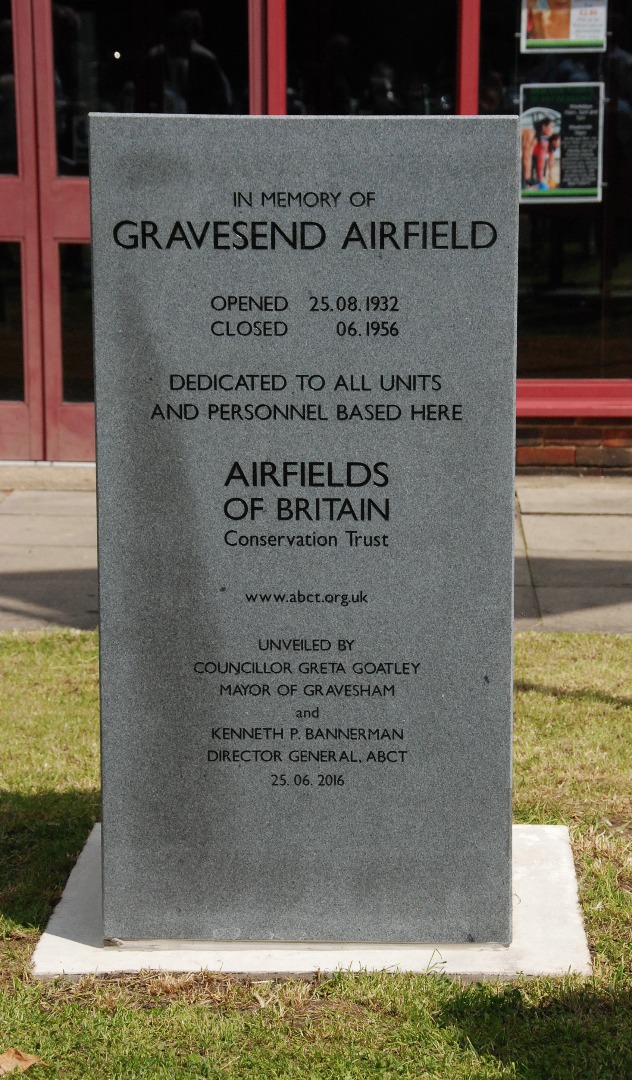
A Supermarine Spitfire Mk I of No 66 Squadron running up its engine at Gravesend in September 1940. © IWM (HU 104503)
Supermarine Spitfire Mark VBs of No 72 Squadron RAF, lined up and ready to start at Gravesend during the Second World War. © IWM (CH 4914)
A Spitfire Mk I of No 66 Squadron at Gravesend in September 1940. © IWM (HU 104504)
A section of four Supermarine Spitfire Mark VBs of No 165 Squadron, RAF takes off at Gravesend, past another aircraft of the squadron at readiness on the airfield during the Second World War. © IWM (CH 7688)
Supermarine Spitfire Mk I of No 66 Squadron being refuelled at Gravesend, September 1940. © IWM (HU 104507)
Spitfire LF VB of No 165 Squadron returns to its dispersal at Gravesend on 16 October 1942. © IWM (CH 7686)
Wing Commander M N Crossley standing in front of a Hawker Typhoon at Gravesend during the Second World War. © IWM (CH 9170)
Taxiway at the west of the airfield, looking south east, 27 August 2009. © Richard Flagg
Standby Set House at Gravesend, 27 August 2009. © Richard Flagg
“New Light Plane Demonstrated at Gravesend”, 1937. Courtesy of British Pathé
No 66 Squadron Supermarine Spitfires at Gravesend, 1940. Courtesy of Hugh Reilley
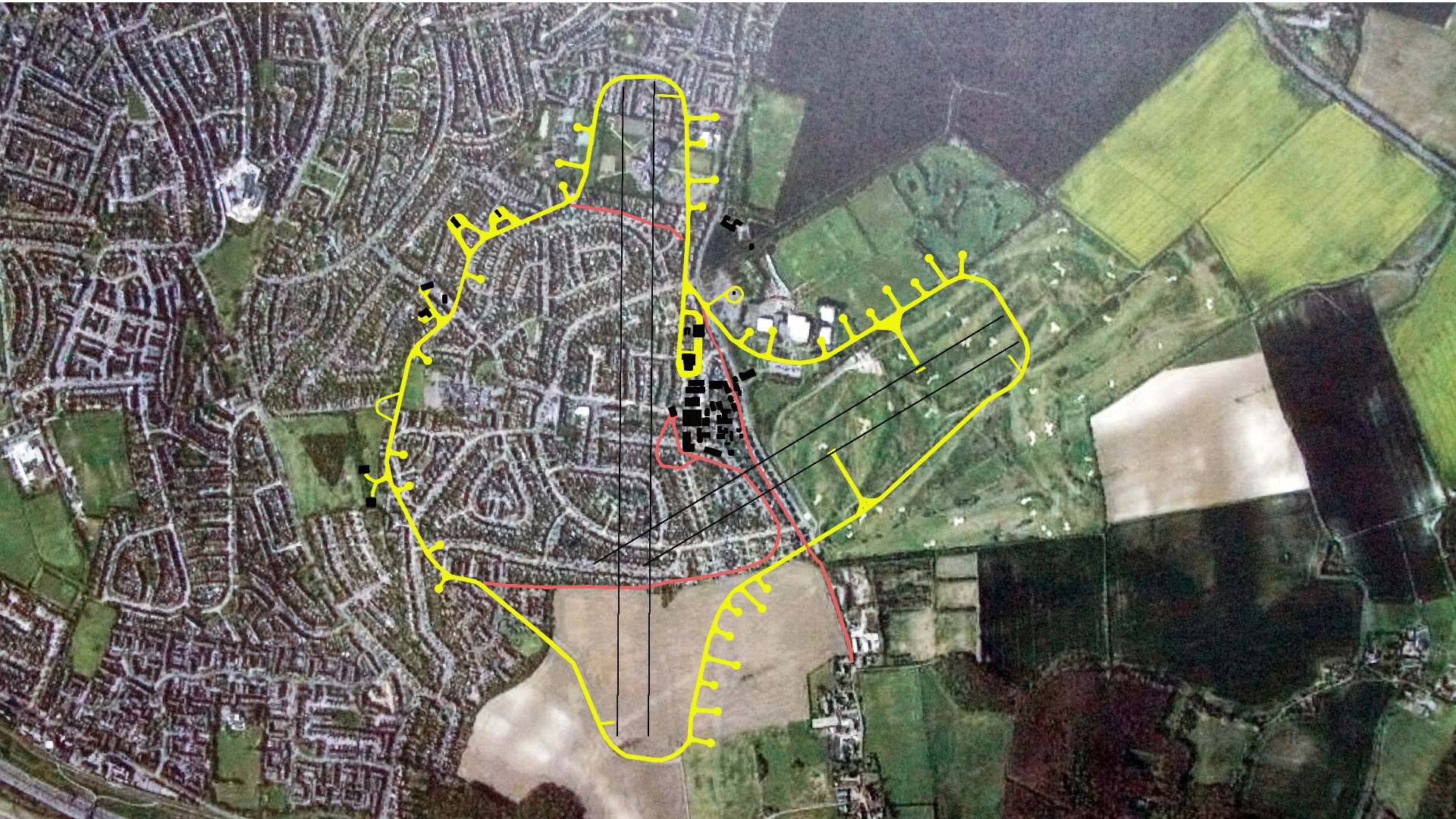
Key
Pink = Roads and tracks
Yellow = Perimeter track and aircraft parking bays
Black = Buildings
Black lines = Grass runways
| Satellite(s): | |
| Decoy Airfield(s): | |
| Associated Airfield(s): |

